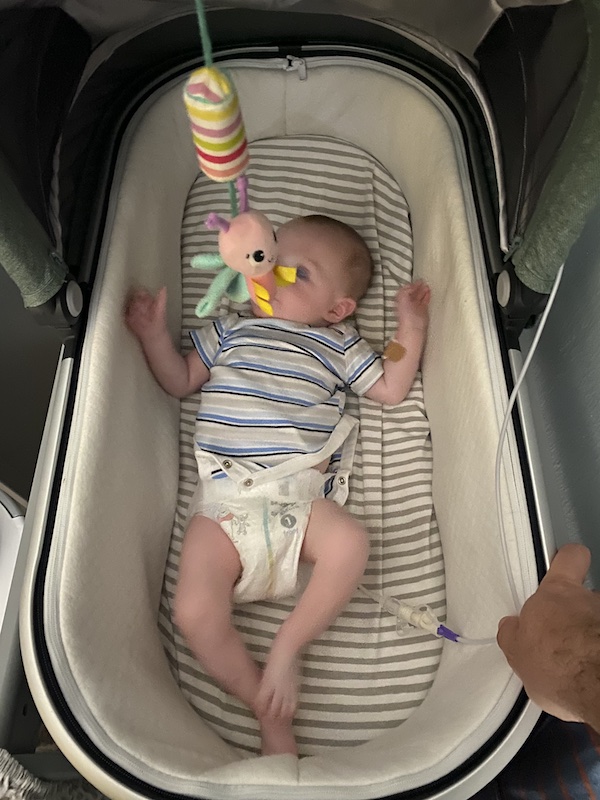Navigating a Cow Protein Allergy and Possible Feeding Tube: It Hasn’t Been Easy
Imagine you have a new child, and they are constantly in and out of the doctor’s office because they are throwing up entire meals. And when their pediatrician weighs them, they are at the bottom of the charts.
It’s not a great feeling, let me tell you. Seeing Liam struggling to eat and to keep it down. Also, seeing this two-month-old boy with IVs in his arm was heartbreaking. But the diagnosis from the ER of a cow protein deficiency was such a relief. We now knew why he was throwing up his entire meals, and with a change in diet, we could stop the vomiting for good. And we could finally get some weight on Liam and on the right track back to health.
Even with the formulas made with less cow protein, Liam was still throwing up his feeds and getting closer and closer to what they call failure to thrive. This meant that since he could not maintain a healthy weight on his own medical intervention was necessary. The intervention meant that a feeding tube was needed since he had developed bottle PTSD.
We checked back into the hospital, but this time it was to have a tube placed. There are a few different types of tubes that doctors would normally start with, the first being a Nasogastric Tube or NG Tube. This tube was inserted through the nose down into the stomach. The tube would connect to a syringe filled with his Neocate formula. And it would gravity feed down, forcing the food into his stomach.
He did not tolerate it at all and ripped out about three of them within the first day of having it placed. Since the NG Tube was clearly not going to work, the next option was to get a Gastrostomy Tube or G Tube surgically placed. This would allow us to directly pump the formula and medications he was on into his stomach. And since the NG Tube was not the answer, after a few tests to be sure he could tolerate it. The tube was placed.
With the new G tube came a host of new medical equipment that Bea and I had to learn how to use. The tube required a pump to get the food into his stomach. Several companies make these, but the one we got from our durable medical equipment supplier was a kangaroo pump. And with the pump came special bags that would hook into the pump, as well as special syringes and attachments for his medications and whatever we would need to put down the tube. (I’ll go more in-depth in a later post)
Having to see your few-month-old child go through the things he went through is the stuff that nightmares are made of for parents. But with this tube, we now had hope that Liam would finally start to gain the weight he needed to, so he could live a healthy life.
*If you have a child that experiences projectile vomiting and does not maintain a healthy weight, please seek medical advice as soon as possible. And if you don’t like the doctor’s answers, see someone else.

